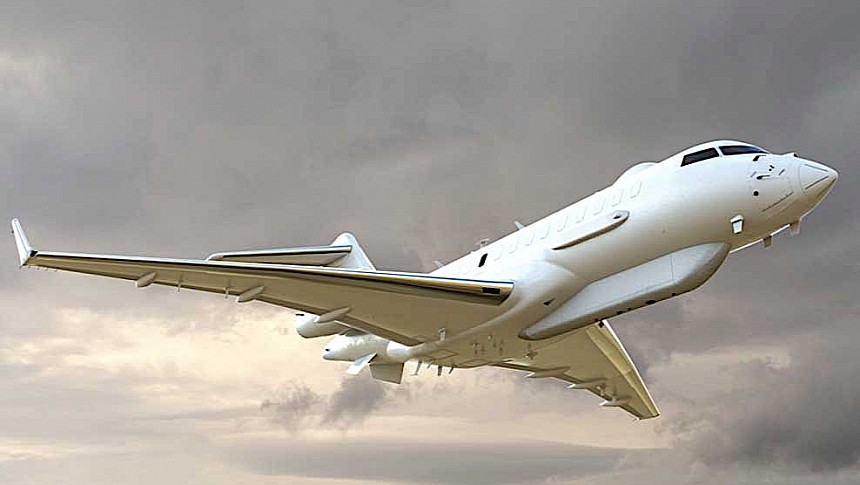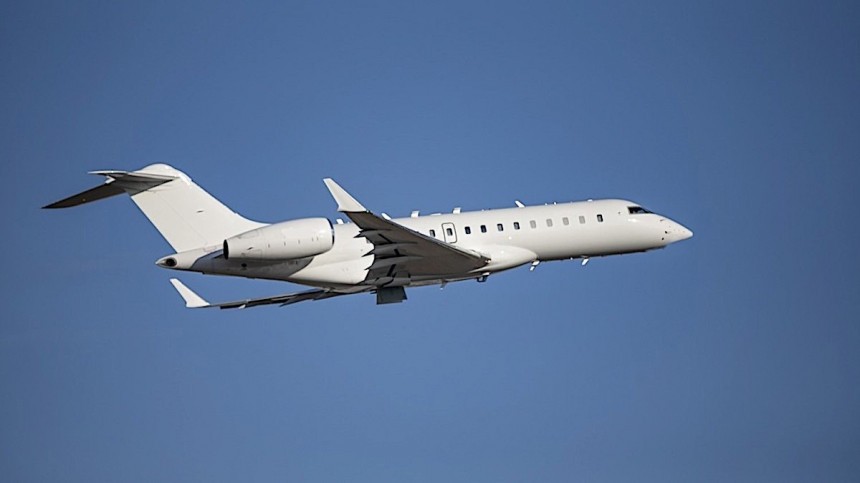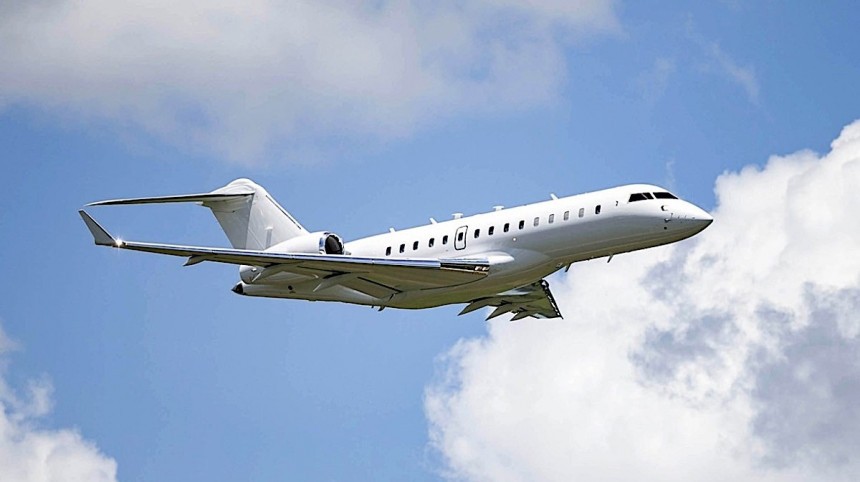In just a few short decades the world has changed drastically. And by that I don't only mean geopolitically, but also in terms of technologies used for daily activities. And in the field of the military, that poses significant challenges.
In a bid to adapt to the new reality, all branches of the American military are currently engaged in efforts meant to modernize anything from hardware to methods. And although the U.S. Air Force (USAF) takes the center stage in this respect, the Army doesn't fall far behind either.
One of the avenues for modernization the Army is currently exploring is its fleet of aerial intelligence, surveillance and reconnaissance (ISR) aircraft. Crucial in giving soldiers the best view possible of the enemy and its intentions, the planes currently in use, about 60 of them, date back to the period of the Cold War.
That's not necessarily a bad thing for the planes themselves, as we're constantly seeing even older machines still flying missions, but it's terrible as far as the tech they use for ISR missions goes. So now the Army is out looking for a new kind of aircraft, with the most modern of technologies, to replace the old fleet.
The program through which it does this is called High Accuracy Detection and Exploitation System, or HADES. It calls for the creation of new solutions for ISR outings, with a special focus on the ones that "do not rely on access to allied military installations to continue the mission."
The hardware should be installed on a platform that can withstand high speed, have more than decent range, and have altitude capabilities that would allow it to spy from very high up. Which is, more or less, the perfect description of a business jet.
It's this class of aircraft the Army settled on for the development of HADES technologies. The airplanes are collectively called for this purpose Aerial Technology Demonstrators (ATD), and they have also been chosen because they allow the installation of a large number of sensors.
The Army has been flying ATDs since 2020, when an undisclosed type of business jet codenamed Artemis was gifted with ISR sensors to see how it would behave.
The sensors apparently worked as advertised, but more than that the jet proved it could fly for longer, can deploy faster, and travel further than turboprops, which make up for the majority of present-day ISR planes. Because they can also fly higher, sensor penetration was found to be deeper.
Following the Artemis another ATD aircraft called Ares was deployed, and as per the Army it revolutionized the contribution of the Army in a joint fight. No details as to what exactly that means were given, but it all sounds impressive. Especially given how the plane is still flying, "competing nearly every day with the nation's most advanced adversaries."
And now things are about to heat up as three defense contractors have joined hands for HADES: L3Harris Technologies, Leidos, and MAG Aerospace. All three are already involved in other ISR projects, but they now have joined forces to deliver a complete fleet of brand-new ISR aircraft.
Their proposal will be based on a Bombardier Global 6500, a jet that's been around since the late 1990s mostly serving corporate needs.
The plane is powered by a pair of Rolls-Royce Pearl engines that can keep it going for distances as large as 7,600 miles (12,200 km) and can raise it to an altitude of as much as 51,000 feet (15,500 meters). The top speed the plane can reach is close to the speed of sound, namely Mach 0.9 (691 mph/1,100 kph).
Generally speaking the plane has enough room inside to carry up to 17 people – it is, as per its maker, the plane with the largest cabin in its class. Because it's a business jet it can be configured to highly luxurious specifications, but that's probably not what will happen in this case.
As per the plan announced this spring, the Army intends to field at least 14 of these new ISR planes for its needs. Unlike the way the current turboprops are spread around the world, at multiple locations, the jets will fly from as few locations as possible as a means to "improve on training and force generation mission command."
The first purchase of such a machine is expected to take place during the upcoming fiscal year, with deliveries expected to begin sometime in 2027. By the middle of the next decade a full deployment of the new flying spy platforms is expected.
It's unclear at this point exactly how much the entire effort will cost, but given all the things currently taking place in the world it will probably all be a worthy investment. As Sgt. Bryden Jones from the 104th Military Intelligence Company says, "we have stepped away from the counterterrorism operations and started looking at a bigger, wider, more strategic objectives."
The trio of companies that announced their project this week did not reveal a timetable for their conversion of the Global 6500.
One of the avenues for modernization the Army is currently exploring is its fleet of aerial intelligence, surveillance and reconnaissance (ISR) aircraft. Crucial in giving soldiers the best view possible of the enemy and its intentions, the planes currently in use, about 60 of them, date back to the period of the Cold War.
That's not necessarily a bad thing for the planes themselves, as we're constantly seeing even older machines still flying missions, but it's terrible as far as the tech they use for ISR missions goes. So now the Army is out looking for a new kind of aircraft, with the most modern of technologies, to replace the old fleet.
The program through which it does this is called High Accuracy Detection and Exploitation System, or HADES. It calls for the creation of new solutions for ISR outings, with a special focus on the ones that "do not rely on access to allied military installations to continue the mission."
The hardware should be installed on a platform that can withstand high speed, have more than decent range, and have altitude capabilities that would allow it to spy from very high up. Which is, more or less, the perfect description of a business jet.
It's this class of aircraft the Army settled on for the development of HADES technologies. The airplanes are collectively called for this purpose Aerial Technology Demonstrators (ATD), and they have also been chosen because they allow the installation of a large number of sensors.
The sensors apparently worked as advertised, but more than that the jet proved it could fly for longer, can deploy faster, and travel further than turboprops, which make up for the majority of present-day ISR planes. Because they can also fly higher, sensor penetration was found to be deeper.
Following the Artemis another ATD aircraft called Ares was deployed, and as per the Army it revolutionized the contribution of the Army in a joint fight. No details as to what exactly that means were given, but it all sounds impressive. Especially given how the plane is still flying, "competing nearly every day with the nation's most advanced adversaries."
And now things are about to heat up as three defense contractors have joined hands for HADES: L3Harris Technologies, Leidos, and MAG Aerospace. All three are already involved in other ISR projects, but they now have joined forces to deliver a complete fleet of brand-new ISR aircraft.
Their proposal will be based on a Bombardier Global 6500, a jet that's been around since the late 1990s mostly serving corporate needs.
The plane is powered by a pair of Rolls-Royce Pearl engines that can keep it going for distances as large as 7,600 miles (12,200 km) and can raise it to an altitude of as much as 51,000 feet (15,500 meters). The top speed the plane can reach is close to the speed of sound, namely Mach 0.9 (691 mph/1,100 kph).
As per the plan announced this spring, the Army intends to field at least 14 of these new ISR planes for its needs. Unlike the way the current turboprops are spread around the world, at multiple locations, the jets will fly from as few locations as possible as a means to "improve on training and force generation mission command."
The first purchase of such a machine is expected to take place during the upcoming fiscal year, with deliveries expected to begin sometime in 2027. By the middle of the next decade a full deployment of the new flying spy platforms is expected.
It's unclear at this point exactly how much the entire effort will cost, but given all the things currently taking place in the world it will probably all be a worthy investment. As Sgt. Bryden Jones from the 104th Military Intelligence Company says, "we have stepped away from the counterterrorism operations and started looking at a bigger, wider, more strategic objectives."
The trio of companies that announced their project this week did not reveal a timetable for their conversion of the Global 6500.








